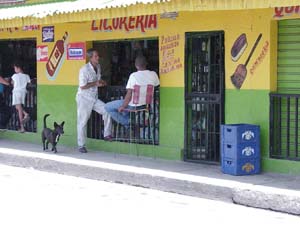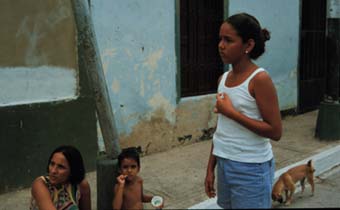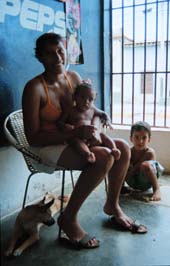 |
| The city of Carúpano is located in Venezuela, in the state of Sucre, on the coast of the Caribbean sea. It is a two hour journey from there to Cumaná, the capital city of the state, and the first city to be built by the Spaniards in the continent.
Carúpano is surrounded by two penisulas: on west is the dry penisula of Araya, and in east the more fertile penisula of Paria. The latter is culturally and geographically distinguishable. Although it is sparsely populated, it has rich natural resources. The inhabitants of Paria are mostly of African origin. This explains the strong African presence in the culture.
The city was founded at 1647 by Fray Damián Lopez who had orders to build a church in the rarely inhabited area west from Cumaná. Fray Damián Lopez's aim was to have a Christian mission among the blacks, mulats and indians who worked in coconut farms of the area. |
 |
.
 |
After the foundation the city remained small and isolated for over three centuries. During the independence war it grew in importance. For example Simón Bolívar issued his Proclamación de los Derechos del Hombre in Carúpano in 1816.
The city of Carúpano has drawn immigrants from other areas in the country and from Europe. People from Cumaná, from Margarita island, Corsicans and from Spain, for example, have moved to Carúpano area, tempted by its blooming agriculture and commercial harbour. When the English took over the nearby located island of Trinidad, the French escaped to the continent.
|
| The Carúpano inhabitants - around 200 000 altogether - are living mostly in the suburbs formed near the centre. Part of the suburbs are comparatively well organized with a good street network and municipal work. However, there are many poor suburbs where municipal services do not extend.
The Semana Santa exhibition reflects the culture of mostly middle class people living in the suburb of Tio Pedro. In Tio Pedro the houses are one-story, colorfully painted, and open on to the street. The streets of Tio Pedro are narrow, and there is not much traffic.
The direct connection between the street and the living room enables the private space and street space to be connected in the front of the house. In a way, it is like the living room continues on the street.
|

|
(the text is based on Tuomo Kariniemi's final thesis work "Carnival in Carúpano - A dialogical approach, University of Helsinki, Department of Anthropology 1997)
|
|